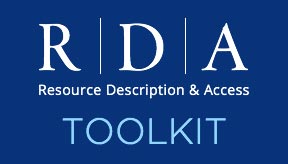Implementation of the LRM in RDA
The RDA Steering Committee (RSC) agreed at its November 2016 meeting to adopt the draft IFLA Library Reference Model (LRM) as a conceptual model for the development of RDA: Resource Description and Access, replacing the Functional Requirements family of models (FRBR, FRAD, and FRSAD) that are superseded by the LRM.
Although the LRM is not yet approved and published by IFLA, the RSC wishes to be proactive at this stage because the final draft submitted for approval is not expected to undergo significant changes. The RSC will continue to monitor the LRM through its protocol with the FRBR Review Group.
The RDA Toolkit Restructure and Redesign (3R) Project will aim for compatibility between the current RDA entities and elements and the LRM, and will use the LRM to guide the development of RDA Toolkit for international, cultural heritage, and linked data communities. The consolidation of gaps and inconsistencies in the preceding conceptual models gives the opportunity for the long-awaited evolution of the treatment of agents, aggregates, and other under-developed areas of RDA. The first significant impacts of the LRM will appear in the April 2018 release of RDA Toolkit.
This announcement gives an initial indication of what those impacts will be. Except where specifically noted, the RSC does not expect current interpretation and application of RDA to be changed. Instead, additional methods for creating and maintaining coherent RDA data will become available.
Three completely new entities will be added to RDA: Collective Agent, Nomen, and Time-span. Two other entities that are already implicit in RDA, Agent and Place, will be added and consolidated.
The existing RDA entities Person, Family, and Corporate Body will become entity sub-types of Agent and Collective Agent, and the associated instructions will be generalized where appropriate. This will require a significant change in the definition of RDA Person, to confine the scope to real human beings. The treatment of fictitious and non-human entities and alternative names of persons such as pseudonyms given in statements of responsibility will be developed in the context of the new Nomen entity so that resources continue to be found. This may result in a change of practice for some authority control systems; an alert was issued to RDA communities in 2014, following discussion on fictitious corporate bodies and families, that the LRM was moving in this direction.
The current RDA elements will be treated as refinements of the high-level LRM relationships. A complete set of relationships between each RDA entity and the others will provide a framework for identifying and developing new, specialized relationship designators.
The LRM allows attributes and relationships to be used in an interchangeable way. This supports the full expansion of the RDA 4-fold path for identifying related entities by unstructured or structured description, identifier, or linked data URI. A new LRM attribute, Manifestation statement, allows a clear distinction between data transcribed from a manifestation to reflect how it describes itself in an unstructured way, and data recorded from other sources. The new Nomen entity will also support the distinction between structured descriptions in the form of access points, and identifiers associated with an entity. These developments will expand the range of metadata capture scenarios covered by RDA, from printed or manuscript catalogue cards through machine transcription, authority control, and relational and linked data.
The RDA guidance and instructions on describing aggregate resources, including serials, collections, and augmentations, will be developed by building on the work of the RSC Aggregates Working Group. The LRM provides the first consolidated model of aggregates available to RDA so this will be a broad area of enhancement.
The RSC will continue to work with related standards groups on the impact of the LRM following the discussions with liaisons and other representatives at a session of the RSC November 2016 meeting. These include the FRBR Review Group, the ISBD Review Group, the ISSN International Centre, the PRESSoo Review Group, and the Permanent UNIMARC Committee. Agreed actions include:
- notifying other groups when publishing information about changes due to adoption of the LRM.
- developing and publishing new elements resulting from refinement of the higher-level LRM elements.
- reviewing current alignments between standards and notifying other groups as changes are made.
- using current communication channels (for example, the IFLA Metadata Newsletter) and developing new opportunities to share information with standards groups and users.
There are several contributions from RSC members in the December 2016 issue of the IFLA Metadata Newsletter, available at http://www.ifla.org/files/assets/classification-and-indexing/ifla_metadata_newsletter_dec2016.pdf
For more information about the impact of the LRM on RDA, see the presentation by Kathy Glennan, RSC representative of the American Library Association, to CC:DA at ALA Midwinter 2017, available at http://alcts.ala.org/ccdablog/wp-content/uploads/2017/01/IFLA-LRM-MW17.pdf
Posted on 3 February 2017
